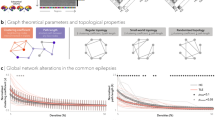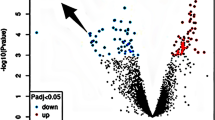Abstract
Previous studies have indicated a potential relationship between zinc and epilepsy. The aim of this study is to investigate the causal relationship between zinc, zinc-dependent carbonic anhydrase, and gray matter volume in brain regions enriched with zinc and epilepsy, as well as explore the possible mechanisms by which zinc contributes to epilepsy. First, this study assessed the risk causality between zinc, carbonic anhydrase, and gray matter volume alterations in zinc-enriched brain regions and various subtypes of epilepsy based on Two-sample Mendelian randomization analysis. And then, this study conducted GO/KEGG analysis based on colocalization analysis, MAGMA analysis, lasso regression, random forest model, and XGBoost model. The results of Mendelian randomization analyses showed a causal relationship between zinc, carbonic anhydrase-4, and generalized epilepsy (p = 0.044 , p = 0.010). Additionally, carbonic anhydrase-1 and gray matter volume of the caudate nucleus were found to be associated with epilepsy and focal epilepsy (p = 0.014, p = 0.003 and p = 0.022, p = 0.009). A colocalization relationship was found between epilepsy and focal epilepsy (PP.H4.abf = 97.7e − 2). Meanwhile, the MAGMA analysis indicated that SNPs associated with epilepsy and focal epilepsy were functionally localized to zinc-finger-protein-related genes (p < 1.0e − 5). The genes associated with focal epilepsy were found to have a molecular function of zinc ion binding (FDR = 2.3e − 6). After the onset of epilepsy, the function of the gene whose expression changed in the rats with focal epilepsy was enriched in the biological process of vascular response (FDR = 4.0e − 5). These results revealed mechanism of the increased risk of epilepsy caused by elevated zinc may be related to the increase of zinc ion-dependent carbonic anhydrase or the increase of the volume of zinc-rich caudate gray matter.




Similar content being viewed by others
Data Availability
The original data supporting the findings of this study are available in the article/Supplementary material, and further inquiries can be directed to the corresponding author.
References
Bando SY, Bertonha FB, Menezes PHN, Takahara AK, Khaled NA, Santos P, S. Junqueira M, Cesar RM Jr, Moreira-Filho CA (2023) Transcriptomic analysis reveals distinct adaptive molecular mechanism in the hippocampal CA3 from rats susceptible or not-susceptible to hyperthermia-induced seizures. Sci Rep 13(1):10265. https://doi.org/10.1038/s41598-023-37535-w
Bin G, Wang T, Zeng H, He X, Li F, Zhang J, Huang B (2017) Patterns of gray matter abnormalities in idiopathic generalized epilepsy: a meta-analysis of voxel-based morphology studies. PLoS ONE 12(1):e0169076. https://doi.org/10.1371/journal.pone.0169076
Bozzi Y, Provenzano G, Casarosa S (2018) Neurobiological bases of autism-epilepsy comorbidity: a focus on excitation/inhibition imbalance. Eur J Neurosci 47(6):534–548. https://doi.org/10.1111/ejn.13595
Camacho-Abrego I, González-Cano SI, Aguilar-Alonso P, Brambila E, la Cruz F, Flores G (2021) Changes in nitric oxide, zinc and metallothionein levels in limbic regions at pre-pubertal and post-pubertal ages presented in an animal model of schizophrenia. J Chem Neuroanat 111:101889. https://doi.org/10.1016/j.jchemneu.2020.101889
Cao D, Ma X, Cai J, Luan J, Liu AJ, Yang R, Cao Y, Zhu X, Zhang H, Chen YX, Shi Y, Shi GX, Zou D, Cao X, Grusby MJ, Xie Z, Zhang WJ (2016) ZBTB20 is required for anterior pituitary development and lactotrope specification. Nat Commun 7:11121. https://doi.org/10.1038/ncomms11121
Chen Y, Li C, Cheng S, Pan C, Zhang H, Zhang J, Zhang Z, Yao Y, Cheng B, Liu L, Meng P, Yang X, Jia Y, Wen Y, Zhang F (2022) The causal relationships between sleep-related phenotypes and body composition: a mendelian randomized study. J Clin Endocrinol Metab 107(8):e3463–e3473. https://doi.org/10.1210/clinem/dgac234
Chicco D, Jurman G (2022) A brief survey of tools for genomic regions enrichment analysis. Front Bioinform 2:968327. https://doi.org/10.3389/fbinf.2022.968327
Costard LS, Neubert V, Venø MT, Su J, Kjems J, Connolly NMC, Prehn JHM, Schratt G, Henshall DC, Rosenow F, Bauer S (2019) Electrical stimulation of the ventral hippocampal commissure delays experimental epilepsy and is associated with altered microRNA expression. Brain Stimul 12(6):1390–1401. https://doi.org/10.1016/j.brs.2019.06.009
Cushing KC, Chen Y, Du X, Chen V, Kuppa A, Higgins P, Speliotes EK (2023) Risk variants in or near ZBTB40 AND NFATC1 increase the risk of both IBD and adverse bone health outcomes highlighting common genetic underpinnings across both diseases. Inflamm Bowel Dis 29(6):938–945. https://doi.org/10.1093/ibd/izac273
Evans DM, Zhu G, Dy V, Heath AC, Madden PA, Kemp JP, McMahon G, St Pourcain B, Timpson NJ, Golding J, Lawlor DA, Steer C, Montgomery GW, Martin NG, Smith GD, Whitfield JB (2013) Genome-wide association study identifies loci affecting blood copper, selenium and zinc. Hum Mol Genet 22(19):3998–4006. https://doi.org/10.1093/hmg/ddt239
Fan Y, Lu H, Liang W, Hu W, Zhang J, Chen YE (2017) Krüppel-like factors and vascular wall homeostasis. J Mol Cell Biol 9(5):352–363. https://doi.org/10.1093/jmcb/mjx037
Grüngreiff K, Gottstein T, Reinhold D (2020) Zinc deficiency-an independent risk factor in the pathogenesis of haemorrhagic stroke? Nutrients 12(11):3548. https://doi.org/10.3390/nu12113548
Heupink TH, Verboven L, Sharma A, Rennie V, de Diego FM, Warren RM, Van Rie A (2023) The MAGMA pipeline for comprehensive genomic analyses of clinical Mycobacterium tuberculosis samples. PLoS Comput Biol 19(11):e1011648. https://doi.org/10.1371/journal.pcbi.1011648
Hudson NO, Buck-Koehntop BA (2018) Zinc finger readers of methylated DNA. Molecules 23(10):2555. https://doi.org/10.3390/molecules23102555
International League Against Epilepsy Consortium on Complex Epilepsies (2023) GWAS meta-analysis of over 29,000 people with epilepsy identifies 26 risk loci and subtype-specific genetic architecture. Nat Genet 55(9):1471–1482. https://doi.org/10.1038/s41588-023-01485-w. Epub 2023 Aug 31
Ke B, Li C, Shang H (2023) Sex hormones and risk of epilepsy: a bidirectional Mendelian randomization study. Front Mol Neurosci 16:1153907. https://doi.org/10.3389/fnmol.2023.1153907
Kistamás K, Szentandrássy N, Hegyi B, Ruzsnavszky F, Váczi K, Bárándi L, Horváth B, Szebeni A, Magyar J, Bányász T, Kecskeméti V, Nánási PP (2013) Effects of pioglitazone on cardiac ion currents and action potential morphology in canine ventricular myocytes. Eur J Pharmacol 710(1–3):10–9. https://doi.org/10.1016/j.ejphar.2013.03.047
Krall RF, Tzounopoulos T, Aizenman E (2021) The function and regulation of zinc in the brain. Neuroscience 457:235–258. https://doi.org/10.1016/j.neuroscience.2021.01.010
Li M, Yan J, Li S, Wang T, Zhan W, Wen H, Ma X, Zhang Y, Tian J, Jiang G (2017) Reduced volume of gray matter in patients with trigeminal neuralgia. Brain Imaging Behav 11(2):486–492. https://doi.org/10.1007/s11682-016-9529-2
Lin PH, Sermersheim M, Li H, Lee PHU, Steinberg SM, Ma J (2017) Zinc in Wound healing modulation. Nutrients 10(1):16. https://doi.org/10.3390/nu10010016
Lin J, Zhou J, Xu Y (2023) Potential drug targets for multiple sclerosis identified through Mendelian randomization analysis. Brain 146(8):3364–3372. https://doi.org/10.1093/brain/awad070
Lindskog S (1997) Structure and mechanism of carbonic anhydrase. Pharmacol Ther 74(1):1–20. https://doi.org/10.1016/s0163-7258(96)00198-2
Lionetto MG, Caricato R, Giordano ME (2020) Carbonic anhydrase sensitivity to pesticides: perspectives for biomarker development. Int J Mol Sci 21(10):3562. https://doi.org/10.3390/ijms21103562
Ma J, Zhao N, Zhu D (2016) Bioabsorbable zinc ion induced biphasic cellular responses in vascular smooth muscle cells. Sci Rep 6:26661. https://doi.org/10.1038/srep26661
Miyazaki T, Takenaka T, Inoue T, Sato M, Miyajima Y, Nodera M, Hanyu M, Ohno Y, Shibazaki S, Suzuki H (2012) Lipopolysaccharide-induced overproduction of nitric oxide and overexpression of iNOS and interleukin-1β proteins in zinc-deficient rats. Biol Trace Elem Res 145(3):375–381. https://doi.org/10.1007/s12011-011-9197-4
Morris DR, Levenson CW (2017) Neurotoxicity of Zinc Adv Neurobiol 18:303–312. https://doi.org/10.1007/978-3-319-60189-2_15
Nowell RW, Elsworth B, Oostra V, Zwaan BJ, Wheat CW, Saastamoinen M, Saccheri IJ, Van’t Hof AE, Wasik BR, Connahs H, Aslam ML, Kumar S, Challis RJ, Monteiro A, Brakefield PM, Blaxter M (2017) A high-coverage draft genome of the mycalesine butterfly Bicyclus anynana. Gigascience 6(7):1–7. https://doi.org/10.1093/gigascience/gix035
Poggetti V, Salerno S, Baglini E, Barresi E, Da Settimo F, Taliani S (2022) Carbonic anhydrase activators for neurodegeneration: an overview. Molecules 27(8):2544. https://doi.org/10.3390/molecules27082544
Portbury SD, Adlard PA (2017) Zinc signal in brain diseases. Int J Mol Sci 18(12):2506. https://doi.org/10.3390/ijms18122506
Qureshi IA, Mehler MF (2014) Sex, epilepsy, and epigenetics. Neurobiol Dis 72 Pt B:210–6. https://doi.org/10.1016/j.nbd.2014.06.019
Rho JM, Boison D (2022) The metabolic basis of epilepsy. Nat Rev Neurol 18(6):333–347. https://doi.org/10.1038/s41582-022-00651-8. Epub 2022 Mar 31
Sanderson E (2021) Multivariable Mendelian randomization and mediation. Cold Spring Harb Perspect Med 11(2):a038984. https://doi.org/10.1101/cshperspect.a038984
Shellhaas RA (2019) Seizure classification, etiology, and management. Handb Clin Neurol 162:347–361. https://doi.org/10.1016/B978-0-444-64029-1.00017-5
Shorte SL, Leclerc GM, Vazquez-Martinez R, Leaumont DC, Faught WJ, Frawley LS, Boockfor FR (2002) PRL gene expression in individual living mammotropes displays distinct functional pulses that oscillate in a noncircadian temporal pattern. Endocrinology 143(3):1126–1133. https://doi.org/10.1210/endo.143.3.8682
Smith SM, Douaud G, Chen W, Hanayik T, Alfaro-Almagro F, Sharp K, Elliott LT (2021) An expanded set of genome-wide association studies of brain imaging phenotypes in UK Biobank. Nat Neurosci 24(5):737–745. https://doi.org/10.1038/s41593-021-00826-4
Sousa MS, Alves JL, Freitas JCS, Miraldo JN, Sampaio Dos Aidos FDS, Santos RM, Rosário LM, Quinta-Ferreira RM, Quinta-Ferreira ME, Matias CM (2023) A model of zinc dynamics evoked by intense stimulation at the cleft of hippocampal mossy fiber synapses. Brain Res 1807:148322. https://doi.org/10.1016/j.brainres.2023.148322
Sun BB, Maranville JC, Peters JE, Stacey D, Staley JR, Blackshaw J, Burgess S, Jiang T, Paige E, Surendran P, Oliver-Williams C, Kamat MA, Prins BP, Wilcox SK, Zimmerman ES, Chi A, Bansal N, Spain SL, Wood AM, Morrell NW, Bradley JR, Janjic N, Roberts DJ, Ouwehand WH, Todd JA, Soranzo N, Suhre K, Paul DS, Fox CS, Plenge RM, Danesh J, Runz H, Butterworth AS (2018) Genomic atlas of the human plasma proteome. Nature 558(7708):73–79. https://doi.org/10.1038/s41586-018-0175-2
Takeda A (2011) Zinc signaling in the hippocampus and its relation to pathogenesis of depression. Mol Neurobiol 44(2):166–174. https://doi.org/10.1007/s12035-010-8158-9
Wootton RE, Lawn RB, Millard LAC, Davies NM, Taylor AE, Munafò MR, Timpson NJ, Davis OSP, Davey Smith G, Haworth CMA (2018) Evaluation of the causal effects between subjective wellbeing and cardiometabolic health: mendelian randomisation study. BMJ 362:k3788. https://doi.org/10.1136/bmj.k3788
Yang F, Smith MJ, Griffiths A, Morrell A, Chapple SJ, Siow RCM, Stewart T, Maret W, Mann GE (2023a) Vascular protection afforded by zinc supplementation in human coronary artery smooth muscle cells mediated by NRF2 signaling under hypoxia/reoxygenation. Redox Biol 64:102777. https://doi.org/10.1016/j.redox.2023.102777
Yang X, Chen S, Zhang S, Shi S, Zong R, Gao Y, Guan B, Gamper N, Gao H (2023b) Intracellular zinc protects Kv7 K+ channels from Ca2+/calmodulin-mediated inhibition. J Biol Chem 299(2):102819. https://doi.org/10.1016/j.jbc.2022.102819
Ye B, Yang G, Li Y, Zhang C, Wang Q, Yu G (2020) ZNF143 in chromatin looping and gene regulation. Front Genet 11:338. https://doi.org/10.3389/fgene.2020.00338
Ying Y, Jiang P (2021) Research progress on transient receptor potential melastatin 2 channel in nervous system diseases. Zhejiang Da Xue Xue Bao Yi Xue Ban 50(2):267–276. https://doi.org/10.3724/zdxbyxb-2021-0110. English
Zhu D, Su Y, Zheng Y, Fu B, Tang L, Qin YX (2018) Zinc regulates vascular endothelial cell activity through zinc-sensing receptor ZnR/GPR39. Am J Physiol Cell Physiol 314(4):C404–C414. https://doi.org/10.1152/ajpcell.00279.2017
Funding
This work was supported by the Science and Technology Program (Key Research and Development Program) of Gansu Province (Grant/Award Number: 21YF1FA171), the Joint Funds of the National Natural Science Foundation of Gansu Province (Grant/Award Number: 23JRRA1504), the Natural Science Foundation of Gansu Province (Grant/Award Number: 82160262), and the Cuiying Technology Innovation Project of Lanzhou University Second Hospital (Grant/Award Number: CY2023-MS-B03).
Author information
Authors and Affiliations
Contributions
Wang T, Luo D, Liu Y, Li J, and Liu X wrote the main manuscript text. Wang T, Luo D, Zhang R, Zhang N, Chen S, Zhang L, Liu J, and Zhang W prepared all figures of this manuscript. And Wang T is responsible for ensuring that the descriptions are accurate and agreed by all authors. All authors reviewed the manuscript.
Corresponding author
Ethics declarations
Ethics Approval
The authors declare that all authors have read the journal’s position on issues involved in ethical publication and affirm that this report is consistent with those guidelines.
Conflict of Interest
The authors declare that the research was conducted in the absence of any commercial or financial relationships that could be construed as a potential conflict of interest.
Additional information
Publisher's Note
Springer Nature remains neutral with regard to jurisdictional claims in published maps and institutional affiliations.
Supplementary Information
Below is the link to the electronic supplementary material.
Rights and permissions
Springer Nature or its licensor (e.g. a society or other partner) holds exclusive rights to this article under a publishing agreement with the author(s) or other rightsholder(s); author self-archiving of the accepted manuscript version of this article is solely governed by the terms of such publishing agreement and applicable law.
About this article
Cite this article
Luo, D., Liu, Y., Li, J. et al. Systematic Analysis of the Relationship Between Elevated Zinc and Epilepsy. J Mol Neurosci 74, 39 (2024). https://doi.org/10.1007/s12031-024-02213-7
Received:
Accepted:
Published:
DOI: https://doi.org/10.1007/s12031-024-02213-7




